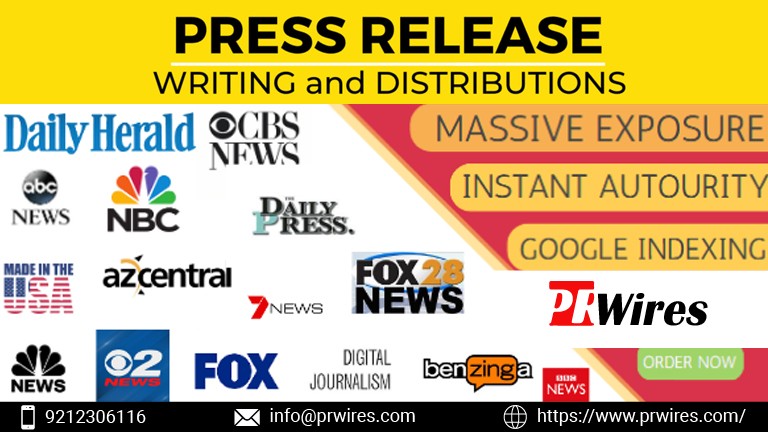In the realm of digital design and marketing, calls-to-action (CTAs) are essential components that drive user engagement and conversion. However, a common issue many designers and marketers face is ensuring that CTAs stand out sufficiently against their background. A CTA that blends into the background or lacks adequate contrast can significantly undermine its effectiveness, leading to lower click-through rates and missed opportunities for conversion.
In this article, we'll explore various strategies and best practices to ensure that your CTAs are prominently displayed and effectively capture your audience's attention. By focusing on contrast, color theory, and design principles, you can enhance the visibility and effectiveness of your CTAs.
Understanding the Importance of Contrast
Contrast is a fundamental design principle that affects readability, visibility, and user experience. In the context of CTAs, sufficient contrast between the CTA button and its background ensures that the button stands out and is easily recognizable. Lack of contrast can result in CTAs being overlooked or ignored by users, which directly impacts the performance of your marketing efforts.
Here are some key reasons why contrast is crucial for CTAs:
- Visibility: High contrast ensures that the CTA button is easily visible against the background, making it more likely that users will notice and interact with it.
- Readability: Adequate contrast enhances the readability of text on the CTA button, ensuring that users can quickly understand the action they need to take.
- Accessibility: Good contrast is essential for users with visual impairments, ensuring that your CTA is accessible to a broader audience.
- User Experience: A well-contrasted CTA improves the overall user experience by guiding users' attention to the most important elements on the page.
Strategies for Creating High-Contrast CTAs
To ensure that your CTAs stand out, consider the following strategies for creating high-contrast designs:
1. Use Contrasting Colors
One of the most straightforward ways to enhance the visibility of your CTA is by using contrasting colors. Color contrast involves selecting colors that are visually distinct from each other, ensuring that the CTA button and its background do not blend together. Here’s how you can achieve effective color contrast:
- Complementary Colors: Choose colors that are opposite each other on the color wheel. For example, a bright blue CTA button against an orange background creates a strong contrast.
- High Contrast Pairings: Opt for high-contrast color combinations, such as black text on a white button or white text on a dark-colored button. These pairings are often the most effective in ensuring readability and visibility.
2. Consider the Background
The background of your CTA can significantly impact its contrast. When designing CTAs, take into account the type of background your button will be placed against:
- Solid Backgrounds: If your CTA button is placed on a solid color background, ensure that the button color provides sufficient contrast against the background color.
- Image Backgrounds: When using images as backgrounds, ensure that the CTA button stands out against the image. You can achieve this by using contrasting colors or adding a semi-transparent overlay behind the CTA to enhance visibility.
3. Test Different Color Combinations
Color perception can vary based on individual preferences and screen settings. To ensure that your CTA maintains high contrast across different devices and settings, conduct A/B testing with various color combinations. This will help you identify the most effective colors for maximizing visibility and engagement.
4. Use Contrast Ratios
Contrast ratios are a measure of the difference in luminance between two colors. For web design, it’s essential to adhere to recommended contrast ratios to ensure readability and accessibility. The Web Content Accessibility Guidelines (WCAG) provide specific contrast ratio recommendations:
- Normal Text: A minimum contrast ratio of 4.5:1 is recommended for normal text.
- Large Text: A minimum contrast ratio of 3:1 is recommended for large text (18pt or 14pt bold).
Use online contrast ratio tools or browser extensions to check the contrast ratios of your CTA button against its background.
Design Principles for Effective CTAs
In addition to contrast, consider these design principles to further enhance the effectiveness of your CTAs:
1. Size and Shape
The size and shape of your CTA button play a role in its visibility. Ensure that the button is large enough to be easily clickable and recognizable. Common shapes for CTAs include rectangular buttons with rounded corners or circular buttons. Choose a shape that complements your design while maintaining prominence.
2. Typography
The font and typography used for your CTA text should be legible and easy to read. Choose fonts that are clear and concise, and ensure that the text size is large enough to be easily readable. Avoid using overly decorative fonts that may hinder readability.
3. Whitespace
Whitespace, or negative space, refers to the empty space around your CTA button. Adequate whitespace around the button helps it stand out and prevents it from feeling crowded. Ensure that your CTA has enough breathing room to draw users' attention and make it easier to locate.
4. Visual Hierarchy
Establish a clear visual hierarchy by positioning your CTA button prominently on the page. Use visual cues such as arrows, icons, or contrasting colors to draw attention to the CTA. Ensure that the button is one of the most noticeable elements on the page, guiding users' focus toward the desired action.
Best Practices for CTA Placement
In addition to design considerations, the placement of your CTA can impact its effectiveness. Follow these best practices for optimal CTA placement:
1. Above the Fold
Place your CTA above the fold, or in the visible portion of the page without requiring users to scroll. This ensures that users see the CTA immediately upon landing on the page, increasing the likelihood of engagement.
2. Clear Path to Conversion
Ensure that the CTA is placed along a clear path to conversion. Position the button in a location where users naturally progress through the content, making it easy for them to take action when they are ready.
3. Multiple CTAs
For longer content or multi-step processes, consider using multiple CTAs strategically placed throughout the page. Ensure that each CTA maintains sufficient contrast and is positioned in a way that guides users toward the next step.
Tools and Resources for Ensuring CTA Contrast
Several tools and resources can assist you in ensuring that your CTAs have adequate contrast:
- Color Contrast Checkers: Online tools such as WebAIM’s Contrast Checker or the Color Contrast Analyzer can help you evaluate the contrast ratios of your CTA button and its background.
- Design Software: Graphic design software like Adobe Photoshop or Figma often includes built-in contrast checking features to help you design high-contrast CTAs.
- Browser Extensions: Extensions like the WCAG Contrast Checker for Chrome can help you assess contrast ratios directly within your browser.
Creating effective calls-to-action is crucial for driving user engagement and conversions. Ensuring that your CTAs have sufficient contrast with their background is a key factor in making them stand out and capturing users' attention. By following best practices for color contrast, design principles, and CTA placement, you can enhance the visibility and effectiveness of your CTAs.
Remember that the goal is to make your CTA as clear and compelling as possible, guiding users toward the desired action with minimal friction. Regularly test and optimize your CTA designs to ensure they remain effective across different devices and user scenarios. With a well-contrasted and strategically placed CTA, you can improve your conversion rates and achieve your marketing objectives.
FAQs
1. Why is contrast important for CTAs?
Contrast is crucial for CTAs because it ensures that the CTA stands out against its background, making it more noticeable and recognizable. Adequate contrast improves visibility, readability, and accessibility, which enhances the likelihood that users will engage with the CTA and take the desired action.
2. What are some effective color combinations for CTAs?
Effective color combinations for CTAs include complementary colors (colors opposite each other on the color wheel) and high-contrast pairings, such as black text on a white button or white text on a dark-colored button. These combinations ensure that the CTA button is easily distinguishable from its background.
3. How can I test the contrast of my CTA button?
You can test the contrast of your CTA button using online contrast ratio tools, such as WebAIM’s Contrast Checker or the Color Contrast Analyzer. These tools help you measure the luminance difference between your CTA button and its background to ensure it meets accessibility standards.
4. What is the recommended contrast ratio for CTAs?
For normal text, a minimum contrast ratio of 4.5:1 is recommended, while for large text (18pt or 14pt bold), a minimum contrast ratio of 3:1 is advised. Adhering to these ratios helps ensure that your CTA is readable and accessible to a broad audience.
5. How can I ensure my CTA stands out against an image background?
To ensure your CTA stands out against an image background, use contrasting colors for the button or add a semi-transparent overlay behind the CTA. This helps enhance the button's visibility and prevents it from blending into the image.
6. What design principles should I follow for effective CTAs?
Effective CTAs should follow design principles such as using a clear and legible font, ensuring adequate button size and shape, utilizing whitespace around the CTA, and establishing a clear visual hierarchy. These principles help make the CTA more prominent and engaging.
7. Where should I place my CTAs for maximum effectiveness?
CTAs should be placed above the fold, or in the visible portion of the page without requiring users to scroll. Additionally, ensure that CTAs are positioned along a clear path to conversion and consider using multiple CTAs strategically throughout longer content.
8. What tools can help me ensure my CTA has adequate contrast?
Tools such as WebAIM’s Contrast Checker, the Color Contrast Analyzer, and browser extensions like the WCAG Contrast Checker for Chrome can help you assess and ensure the contrast of your CTA button. Design software like Adobe Photoshop or Figma also includes built-in contrast checking features.
9. How often should I test and optimize my CTA designs?
Regularly testing and optimizing your CTA designs is important to ensure they remain effective across different devices and user scenarios. Conduct A/B testing with various color combinations and monitor performance metrics to continuously improve your CTAs.
10. How can contrast impact accessibility for users with visual impairments?
Sufficient contrast is essential for users with visual impairments, as it ensures that text and elements on the CTA are readable and distinguishable. Adhering to accessibility guidelines and using high-contrast designs helps create an inclusive user experience for all individuals.
Get in Touch
Website – https://www.webinfomatrix.com
Mobile - +91 9212306116
Whatsapp – https://call.whatsapp.com/voice/9rqVJyqSNMhpdFkKPZGYKj
Skype – shalabh.mishra
Telegram – shalabhmishra
Email - info@webinfomatrix.com

%20(1).jpg)
.jpg)
.jpg)
.jpg)






 English (US) ·
English (US) ·